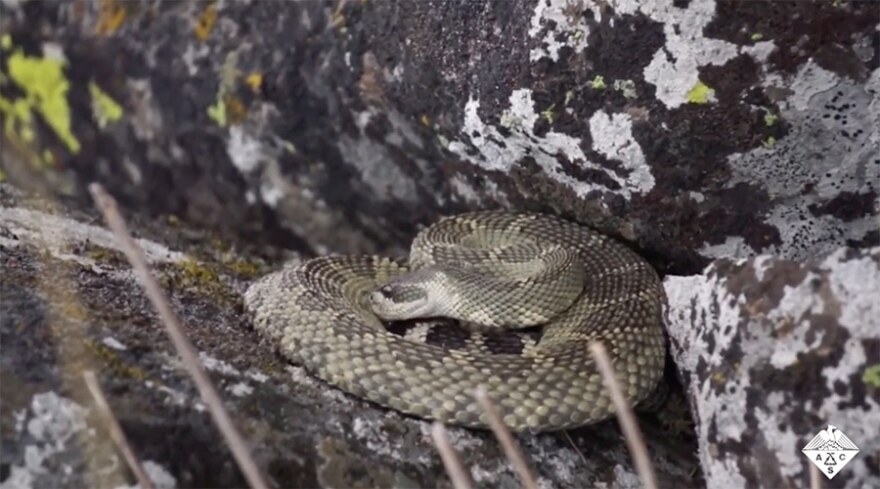This Earth Note originally aired on September 29, 2021
No creature conjures up images of the burning hot desert better than the rattlesnake, with its venomous fangs, buzzing tail and ability to withstand extreme heat. But even rattlesnakes get thirsty, and they know an unusual way to quench their thirst: they harvest rainwater from their backs.
Western diamond-backed rattlesnakes emerge from their dens even in the dead of winter to collect rain, sleet and snow. They coil and flatten their bodies to gather as much moisture as possible. Rattlesnakes hunt by staying in place, waiting for their prey to come within striking distance. They can't always go searching for water, and puddles dry up fast after rainstorms. It makes sense to use their own bodies as catchment systems. The snakes simply swivel their heads around to sip the droplets cradled in their coils.
It's not something just any snake can do. Scientists at Arizona State University gathered the shed skins of several types of snakes and sprinkled them with drops of red-dyed water. The drops rolled right off the scales of gopher snakes and kingsnakes, but not rattlesnakes. Their scales have a unique pattern of ridges and channels that encourage raindrops to bead-up and stick. Under a microscope, this "nano-texture" looks a bit like rolling sand dunes. It's so effective the raindrops even stick to the snake's sides.
That's how a desert creature without any arms or legs can carry around its own personal water bottle. Even the rattlesnakes know it's a good idea to hydrate in the Arizona heat!



